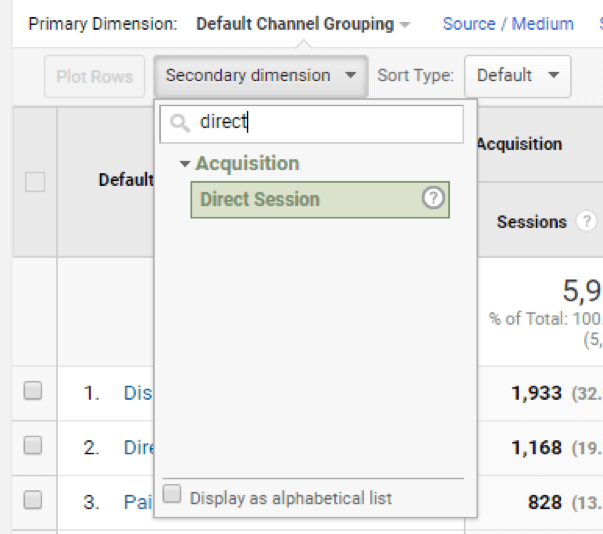How to Utilize Secondary Dimension in Google Analytics for Deeper Insights
How to Utilize Secondary Dimension in Google Analytics for Deeper Insights
Blog Article
Unlock Deeper Insights With Secondary Dimension in Google Analytics
With the huge expanse of information available in Google Analytics, the use of additional measurements can significantly enrich your logical capacities. These extra layers of data use a nuanced point of view that can brighten intricate information within your main metrics. By strategically including secondary dimensions right into your evaluation, you can unearth important understandings that may or else remain obscure. The capacity to translate and divide individual actions with greater accuracy opens up a world of possibilities for enhancing approaches and enhancing efficiency.
Comprehending Primary Vs. Second Measurements
On the various other hand, secondary measurements enable you to further study your key dimension data. By adding a secondary measurement, you can layer on additional info to your main measurement, making it possible for a more granular analysis. If your key dimension is the source/medium with which customers showed up on your website, adding a second dimension like geographic place can expose where those customers are located geographically.
Utilizing Additional Measurements Effectively
Properly utilizing second dimensions in Google Analytics enhances the depth and granularity of information evaluation, supplying valuable understandings into user habits and trends. By including secondary measurements alongside primary dimensions, experts and marketers can dig deeper into the specifics of user interactions on their websites. Secondary dimensions allow customers to section and filter primary dimension data further, offering an extra detailed sight of user habits, demographics, and interactions. This can be especially valuable when trying to comprehend the effect of specific variables on individual engagement, such as the web browsers or devices they are utilizing, the sources of their traffic, or their geographic places.
Moreover, additional measurements allow customers to compare and contrast different information points within a solitary report, facilitating a much more detailed evaluation of user habits patterns. By leveraging secondary measurements successfully, services can reveal hidden understandings, enhance their advertising and marketing strategies, and enhance the general user experience on their sites.
Discovering Typical Secondary Measurement Combinations
To further analyze individual behavior and fads in Google Analytics, it is useful to check out common combinations of secondary dimensions. By combining different secondary measurements, experts and marketing experts can acquire much deeper understandings into just how numerous elements affect and engage web site efficiency. Some typical second dimension combinations that supply valuable insights consist of analyzing web traffic sources with customer areas to recognize where website visitors are coming from geographically and exactly how they found the site. Combining landing pages with devices can disclose which web pages execute best on different devices, helping in enhancing the website for better user experience. In addition, examining individual actions metrics with additional dimensions such as demographics or interests can assist in targeting specific target market sections better. By discovering these usual additional dimension combinations, businesses can uncover concealed patterns, identify possibilities for enhancement, and make data-driven choices to enhance their on the internet presence.
Using Secondary Measurement in Customized Information
Making use of secondary dimensions in custom reports enables a more thorough analysis of information in Google Analytics, improving the deepness of insights acquired. When developing personalized reports in Google Analytics, including second dimensions can supply a much more detailed sight of just how various measurements Recommended Reading connect with each other. This feature enables individuals to dig much deeper right into their information and reveal important connections that might not be instantly apparent.
By applying additional measurements in personalized records, customers can get a much better understanding of their site or app web traffic. Integrating the primary measurement of "source/medium" with the secondary dimension of "landing web page" can expose which touchdown web pages are carrying out ideal for website traffic coming from particular resources. This understanding can aid marketing experts optimize their campaigns and improve total conversion prices.

Enhancing Information Visualization With Second Measurement
When checking out data in Google Analytics customized records, including second measurements not only offers an extra comprehensive analysis but likewise enhances the visual depiction of understandings via information visualization. By including an additional measurement to your records, you can enhance the means information exists, making it easier to recognize patterns, trends, and correlations within your site's performance metrics.
Second measurements can aid you section your data additionally, enabling a deeper understanding of individual habits and communications on your site. This improved level of granularity can be particularly valuable when trying to isolate certain variables that may impact your web site's performance - Secondary Dimension in Google Analytics.

Verdict
In conclusion, leveraging secondary measurements in Google Analytics enables for a more detailed evaluation of data, bring about much deeper insights and more educated decision-making. Secondary Dimension in Google Analytics. By adding added layers of info to main information collections, experts and marketers can uncover covert patterns, patterns, and connections that give a granular sight of customer actions and communications. This boosted degree of insight enables optimization of projects and tailored approaches for particular target market sectors, ultimately enhancing efficiency and conversion prices
On the other hand, second measurements enable you to more explore your primary dimension data. By including a secondary measurement, you can layer on extra info to your main measurement, enabling a much more granular analysis. If your key dimension is the source/medium with which customers got here on your site, including a second measurement like geographic place can disclose where those users are situated geographically. By including secondary measurements alongside main measurements, analysts and marketing professionals can dive much deeper into the specifics of individual communications on their websites. Secondary measurements allow individuals to section and filter key measurement data further, providing a more comprehensive sight of customer actions, demographics, and communications.
Report this page